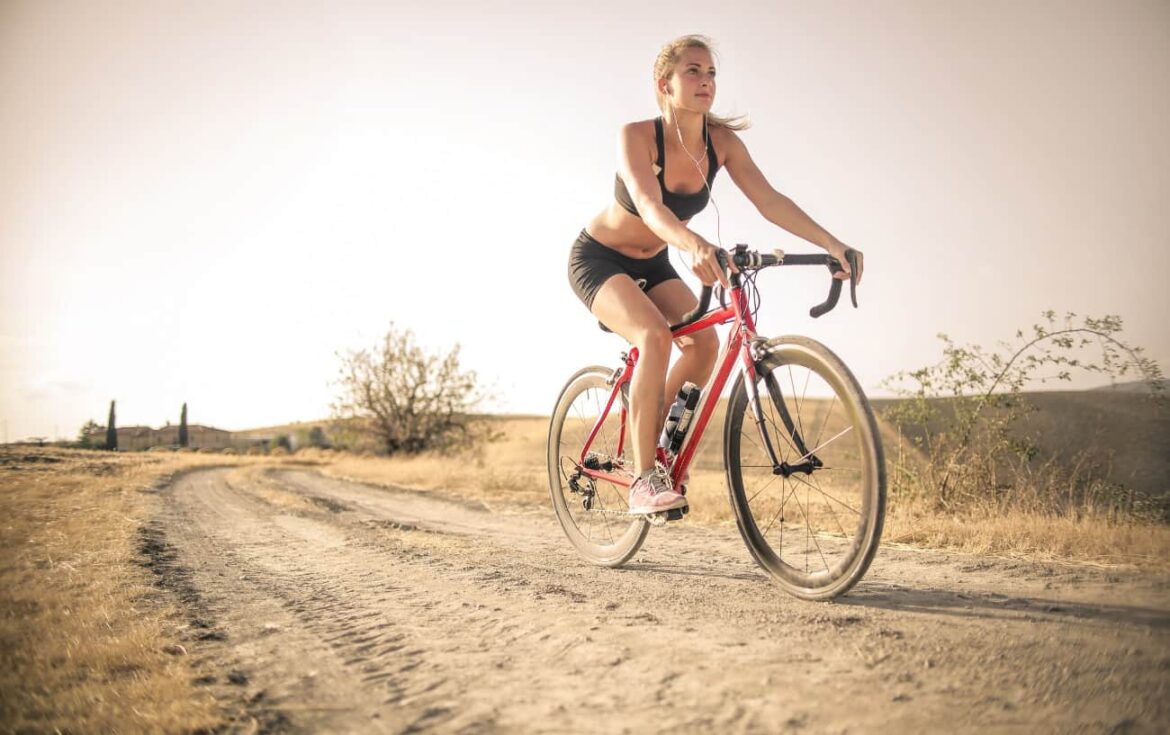Are you looking to get the most out of your workouts? If so, it’s important to understand just how many calories you can burn during different exercises. In this article, we’ll be focusing on cycling and specifically, how many calories you can burn in just 30 minutes. Cycling is not only a fun and exhilarating way to stay fit, but it’s also a great way to torch calories and shed unwanted pounds. Whether you prefer to cycle outdoors or hit the stationary bike at the gym, knowing the calorie burn rate can help you plan your workouts more effectively. So, if you’re curious to find out just how many calories you can burn cycling for 30 minutes, keep reading. We’ll explore different variables that can affect calorie burn, as well as give you some tips on how to maximize your workout and get the most out of your cycling sessions.
The Benefits of Cycling For Exercise
Cycling is a fantastic form of exercise that offers numerous benefits for both physical and mental well-being. Not only does it provide a great cardiovascular workout, but it also helps to build strength, improve balance, and increase endurance. One of the greatest advantages of cycling is that it is a low-impact exercise, which means it puts less strain on your joints compared to other high-impact activities like running. This makes it an excellent choice for individuals with joint issues or those who are recovering from injuries.
Another advantage of cycling is that it can be easily incorporated into your daily routine. Whether you choose to cycle to work, run errands, or simply take leisurely rides on the weekends, you can easily integrate cycling into your lifestyle. Unlike other forms of exercise that may require specific time commitments or access to a gym, cycling allows you the flexibility to choose when and where you want to ride.
In addition to the physical benefits, cycling also has a positive impact on mental health. The rhythmic motion of pedaling, combined with the fresh air and scenic views, can help reduce stress, improve mood, and boost overall mental well-being. It’s no wonder that many cyclists experience a sense of freedom and joy when they hop on their bikes.
Understanding Calories and How They Relate to Exercise
Before we dive into the specifics of calorie burn while cycling, let’s take a moment to understand what calories are and how they relate to exercise. Calories are a unit of measurement that represents the energy content of food and the energy expenditure of physical activity. When we consume food, our bodies convert it into energy to fuel our daily activities, including exercise.
In the context of exercise, calories are burned to provide the energy needed to perform physical tasks. The more intense the activity, the more calories are burned. This is why high-intensity exercises like sprinting or HIIT workouts tend to burn more calories compared to low-intensity activities like walking or gentle yoga.
To better understand how calories and exercise relate to each other, it’s important to know that 1 pound of body weight is roughly equivalent to 3,500 calories. This means that in order to lose 1 pound of weight, you need to create a calorie deficit of 3,500 calories. This can be achieved by a combination of diet and exercise. While diet plays a crucial role in weight management, exercise helps to increase your calorie burn and improve overall fitness.
Factors That Affect Calorie Burn While Cycling
The number of calories you burn while cycling for 30 minutes can vary depending on several factors. Understanding these factors can help you estimate your calorie burn more accurately and make adjustments to your workout routine if necessary.
1. **Intensity**:
The intensity of your cycling workout plays a significant role in determining the number of calories you burn. Higher intensity workouts, such as cycling at a fast pace or tackling challenging terrains, will naturally result in a higher calorie burn compared to leisurely rides.
2. **Body weight**:
Your body weight also affects the number of calories you burn while cycling. Generally, the more you weigh, the higher your calorie burn will be. This is because it requires more energy to move a heavier body mass.
3. **Fitness level**:
Your current fitness level can impact your calorie burn during cycling. Individuals who are more fit tend to have a higher calorie burn as their bodies are more efficient at performing physical activities.
4. **Gender**:
Gender can also play a role in calorie burn. On average, men tend to have a higher muscle mass and lower body fat percentage compared to women, which can result in a slightly higher calorie burn.
5. **Cycling speed**:
The speed at which you cycle can impact your calorie burn. Cycling at a faster pace or incorporating intervals of high-intensity sprints can increase your calorie expenditure.
6. **Resistance**:
If you’re cycling on a stationary bike, you can adjust the resistance level to increase the intensity of your workout. Higher resistance requires more effort and therefore burns more calories.
How to Calculate Calorie Burn While Cycling
To get a rough estimate of the number of calories you burn while cycling, you can use a simple calculation based on your body weight and the intensity of your workout. The calculation is as follows:
**Calories burned = Body weight (in kg) x MET value of the activity x Duration of the activity (in hours)**
MET stands for Metabolic Equivalent of Task, which is a unit used to estimate energy expenditure during physical activities. The MET value for cycling varies depending on the intensity. For example, cycling at a leisurely pace may have a MET value of 4, while cycling at a vigorous pace may have a MET value of 8.
Let’s say you weigh 70 kilograms and you cycle at a moderate pace for 30 minutes. Using the formula above, the calculation would be:
**Calories burned = 70 kg x 6 MET x 0.5 hours = 210 calories**
Keep in mind that this is just a rough estimate and individual results may vary. Factors such as fitness level, cycling efficiency, and body composition can influence calorie burn.
The Average Calorie Burn For 30 Minutes of Cycling
On average, a person weighing around 70 kilograms can burn approximately 210-300 calories by cycling at a moderate pace for 30 minutes. However, as mentioned earlier, this number can vary depending on individual factors such as body weight, fitness level, and cycling intensity.
For individuals looking to maximize their calorie burn, incorporating high-intensity intervals into their cycling workouts can significantly increase the calorie expenditure. Interval training involves alternating between periods of high intensity and lower intensity or recovery periods. This type of training keeps your heart rate elevated and can help you burn more calories in a shorter amount of time.
It’s important to note that calorie burn is just one aspect of a well-rounded workout routine. While burning calories is crucial for weight management, it’s equally important to focus on overall fitness, strength, and endurance. Incorporating other forms of exercise, such as strength training or flexibility exercises, can complement your cycling workouts and help you achieve a well-balanced fitness routine.
Tips For Maximizing Calorie Burn During a Cycling Workout
If you’re looking to maximize calorie burn during your cycling workouts, here are some tips to keep in mind:
1. **Increase intensity**:
Incorporate high-intensity intervals or hill climbs into your cycling routine. These bursts of intense effort will elevate your heart rate and increase calorie burn.
2. **Vary your workouts**:
Mix up your cycling workouts by trying different routes, terrains, or cycling classes. This helps to keep your workouts interesting and challenges your body in new ways, leading to increased calorie burn.
3. **Focus on resistance**:
If you’re using a stationary bike, increase the resistance level to make your muscles work harder. This will increase the intensity of your workout and boost calorie burn.
4. **Stay consistent**:
Consistency is key when it comes to burning calories and improving fitness. Aim for regular cycling sessions, whether it’s three times a week or every day, to maximize your calorie burn over time.
5. **Track your progress**:
Use a fitness tracker or smartphone app to monitor your cycling workouts and track your calorie burn. This can help you stay motivated and make adjustments to your routine if needed.
6. **Fuel your body**:
Eating a balanced diet that provides the necessary nutrients and energy is essential for maximizing your workouts. Make sure to fuel your body with healthy carbohydrates, proteins, and fats to support your cycling performance and recovery.
Other Factors to Consider For an Effective Workout
While calorie burn is an important factor to consider, there are other aspects to keep in mind for an effective cycling workout. Here are a few additional factors to consider:
1. **Proper form**:
Maintaining proper cycling form helps to prevent injuries and ensures an efficient workout. Pay attention to your posture, pedal stroke, and bike fit to optimize your performance.
2. **Warm-up and cool-down**:
Before and after your cycling sessions, it’s important to warm up your muscles and gradually increase your heart rate. Similarly, cooling down and stretching afterward can help prevent muscle soreness and aid in recovery.
3. **Hydration**:
Staying hydrated before, during, and after your cycling workouts is crucial for performance and overall well-being. Make sure to drink enough water to replace fluids lost through sweat.
4. **Rest and recovery**:
Giving your body enough time to rest and recover is essential for avoiding overtraining and injuries. Incorporate rest days into your workout routine and listen to your body’s signals.
By considering these factors and incorporating them into your cycling routine, you can make the most of your workouts and achieve your fitness goals more effectively.
Tracking Your Calorie Burn and Progress
To keep track of your calorie burn and progress, consider using a fitness tracker or smartphone app that allows you to monitor your workouts. These devices and apps can provide real-time data on metrics such as distance, speed, heart rate, and calorie burn. By tracking your workouts, you can set goals, measure your progress, and make adjustments to your routine as needed.
Remember, consistency is key when it comes to burning calories and improving fitness. By tracking your calorie burn and progress, you can stay motivated and hold yourself accountable to your fitness goals.
Other Exercises That Can Complement Cycling For Maximum Calorie Burn
While cycling is an excellent exercise for burning calories, incorporating other forms of exercise into your routine can further enhance your calorie burn and overall fitness. Here are a few exercises that can complement your cycling workouts:
1. **Strength training**:
Adding strength training exercises, such as weightlifting or bodyweight exercises, can help build muscle mass. Increased muscle mass leads to a higher resting metabolic rate, which means you burn more calories even at rest.
2. **High-intensity interval training (HIIT)**:
HIIT workouts involve short bursts of intense exercise followed by short periods of rest. These workouts are highly effective for calorie burn and can be done in a short amount of time.
3. **Swimming**:
Swimming is a low-impact exercise that engages the entire body and provides an excellent cardiovascular workout. It can be a great way to cross-train and give your muscles a break from cycling.
4. **Running**:
Running is another high-intensity exercise that can burn a significant number of calories. It’s a great option for individuals looking to challenge themselves and improve their cardiovascular fitness.
Remember to consult with a healthcare professional or fitness expert before starting any new exercise routine, especially if you have any underlying health conditions or injuries.
Conclusion: Incorporating Cycling Into Your Fitness Routine
Cycling is a fantastic exercise for burning calories, improving cardiovascular fitness, and enhancing overall well-being. By understanding the factors that affect calorie burn while cycling and implementing strategies to maximize your workouts, you can make the most out of your cycling sessions.
Remember, calorie burn is just one aspect of a well-rounded fitness routine. It’s important to focus on overall fitness, strength, and endurance. By incorporating other forms of exercise and maintaining a balanced diet, you can achieve a well-rounded fitness routine that supports your goals.
So, whether you’re an avid cyclist or just starting out, hop on your bike and enjoy the countless benefits that cycling has to offer. Get ready to torch calories, boost your fitness, and experience the sheer joy of cycling. Happy pedaling!
*Note: The calorie burn values and calculations mentioned in this article are approximate and can vary depending on individual factors. Always consult with a healthcare professional or fitness expert for personalized advice.*
How Many Calories Burn In A Kiss: Some Interesting Answers
The Science Behind Burning Calories While Sleeping
How Many Calories Do You Burn in a Day Without Exercise?- A Revelation!
How Many Calories Does Cycling Burn in 30 Minutes for Weight Loss?




